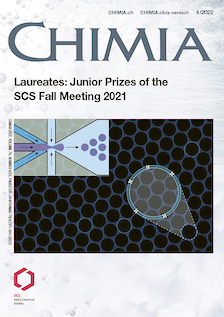Replica-Exchange Enveloping Distribution Sampling: Calculation of Relative Free Energies in GROMOS
DOI:
https://doi.org/10.2533/chimia.2022.327PMID:
38069773Keywords:
Computational chemistry, Free energy, RE-EDSAbstract
Molecular dynamics (MD) simulations have become an important tool to investigate biological systems. Free-energy calculations based on MD are playing an increasingly important role for computer-aided drug design and material discovery in recent years. Free-energy differences between pairs of end-states can be estimated using well-established methods such as thermodynamic integration (TI) or Bennett’s acceptance ratio (BAR). An attractive alternative is the recently developed replica-exchange enveloping distribution sampling (RE-EDS) method, which enables estimating relative free-energy differences between multiple molecules from a single simulation. Here, we provide an introduction to the principles underlying RE-EDS and give an overview of the RE-EDS pipeline. In addition, we provide a description of the two complementary tools RestraintMaker and amber2gromos. We briefly discuss the findings of three recent applications of RE-EDS to calculate relative binding or hydration free energies. In all three studies, good agreement was found between the results obtained using RE-EDS and experimental values as well as values obtained using other free-energy methods.
Funding data
-
Schweizerischer Nationalfonds zur Förderung der Wissenschaftlichen Forschung
Grant numbers 200021-178762;200021-175944
Downloads
Published
Issue
Section
License
Copyright (c) 2022 Salomé R. Rieder, Benjamin Ries, Candide Champion, Emilia P. Barros, Philippe H. Hünenberger, Sereina Riniker

This work is licensed under a Creative Commons Attribution 4.0 International License.







